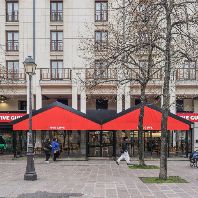The wave of assets expected to hit the European property market over the next few years, due to a peak in terminations of the first generation of modern non-listed real estate funds, is likely to be moderated considerably, according to a new report from INREV.
The INREV Vehicles Database shows that there are 90 closed-end funds with a total of 49.5 bln. in GAV (gross asset value) due to terminate in the next three years. The peak in terminations in 2009 and 2010 alone could release 33.7 bln. (current GAV) of properties onto the market.
But the INREV Fund Termination study, based on a survey and interviews with fund managers and investors, found that 59% of core funds due to terminate between 2007 and 2010 are likely to continue the fund (extend or rollover) rather than liquidate.
Fund managers and investors are opting for continuations due to the high interest in real estate, particularly the high-quality assets held in core nonlisted funds, which are otherwise scarce, so avoiding the need to go back into the market.
"The Fund Termination Study shows the potential for a large number of new investment opportunities as these closed-end funds end their terms. But our research also indicates that the various termination options available to investors and managers may result in the bunching of fund exit dates being dispersed, moderating the peaks that are now concentrated between 2009 and 2011," INREV Chief Executive Lisette van Doorn said.
The study found there was more of a tendency for funds higher up the risk spectrum to opt for liquidation, with 67% of value-added vehicles and 100% of opportunistic funds choosing the termination route. The smoothing of the liquidation peaks over time will also be extended by the different characteristics of the European markets and their respective positions on the real estate market cycle. The UK, for example, may see proportionally more terminations than other parts of Europe as investors conclude this market has passed the top of the cycle and opt for liquidation rather than a continuation of their funds.
In addition, the fund liquidation strategy is mostly executed in a flexible way, meaning that all sales are not executed at the same time, with fund managers determining the timing of the sales on the maturity of the individual assets. The study shows that almost 90% of respondents thought that an asset-by-asset sale was either "extremely," or "most likely" when asked about probable liquidation options.
The INREV Fund Termination Study carried out by Finnish research consultants KTI, covered a sample of 51 European non-listed closed-end real estate funds due for termination between 2007 and 2010 with a GAV of 13.5 bln. This sample represents the universe for this period which comprises 131 funds with a GAV of 52 bln.
The average term of these funds is 10 years and they represent the first generation of non-listed modern real estate vehicles that expanded dramatically with the decline of the 'cult of equities' following the dot.com crash, and the subsequent flood of capital into alternative investments, particularly bricks and mortar.
The termination decision process, which is also discussed in the study, concludes that it is a collaborative process between both parties. "It makes sense that both investors and fund managers completely align their interests over a fund's termination. It is in both parties' interests that the assets have reached maturity and that they sell-off in the right market circumstances, otherwise the fund manager will lose out on his performance fee and the investors will not achieve the maximum from their investments," Van Doorn concluded.
INREV







